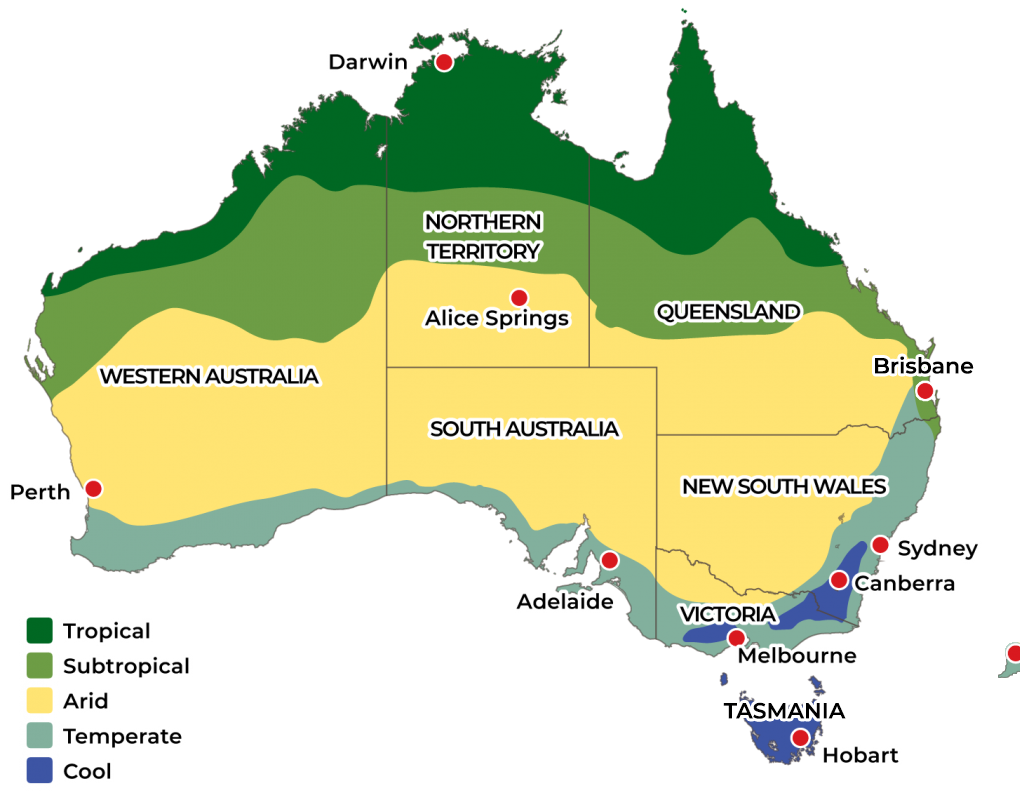GROWING ZONES IN AUSTRALIA
GROWING ZONES HELP PICK THE BEST TIME TO PLANT
The climate, and particularly frost and extremely low temperatures, play a big role in whether your plant seeds will flourish in Australia. That’s where climate growing zones can help you decide which seeds to plant and when to plant them.
The Tropical Zone has warm winters and hot and humid summers with highest temperatures averaging above 30 C. It abuts the northern coastline from Broome on the west coast through Darwin in the north, to Cairns and Rockhampton on the eastern seaboard.
The Subtropical Zone experiences mild winters and average highs of under 30 C in summer. It stretches from Geraldton and Canarvon on the west coast to Rockhampton on the eastern seaboard before extending southwards to Brisbane, and through Coffs Harbour to Sydney.
The Arid Zone summers are hot and dry, with winters warm in the north but dropping to an average lowest minimum of -5 C further south. The zone extends from Western Australia to the Great Dividing Range, including Alice Springs in the north, sections of Queensland, South Australia, New South Wales, and part of Victoria.
The Temperate Zone enjoys warm summers, with low humidity in the northern parts, and mild winters with an average annual minimum low of 5 C. It includes the coastal areas from Perth to Melbourne and south of Sydney, as well as the lower parts of the New South Wales tablelands and part of Queensland’s interior.
The Cool Zone changes from warm summers to cold and frosty winters with snow in some areas and an annual lowest temperature average between -5 C and zero. Areas involved are most of Tasmania, Canberra and the ACT, high mountain and tableland areas in South East Queensland, New South Wales, and Victoria.

